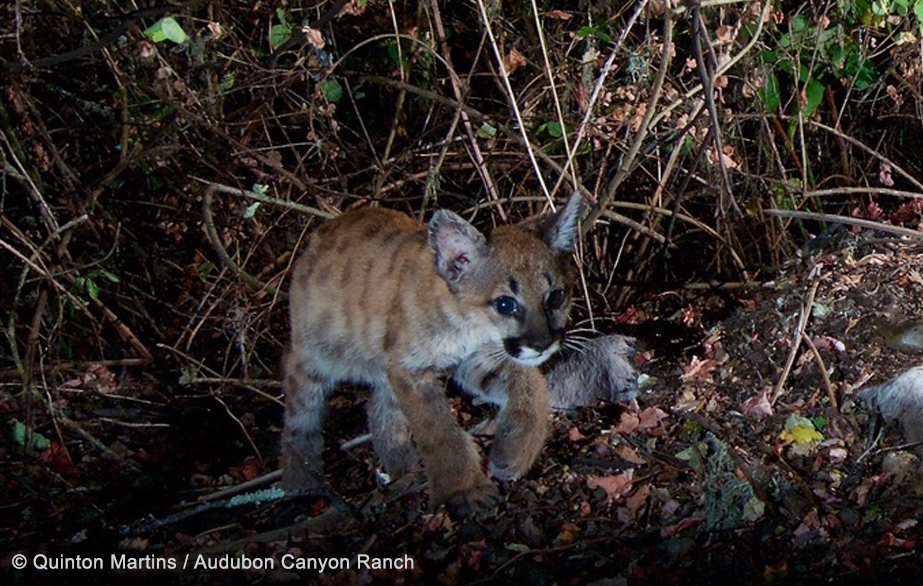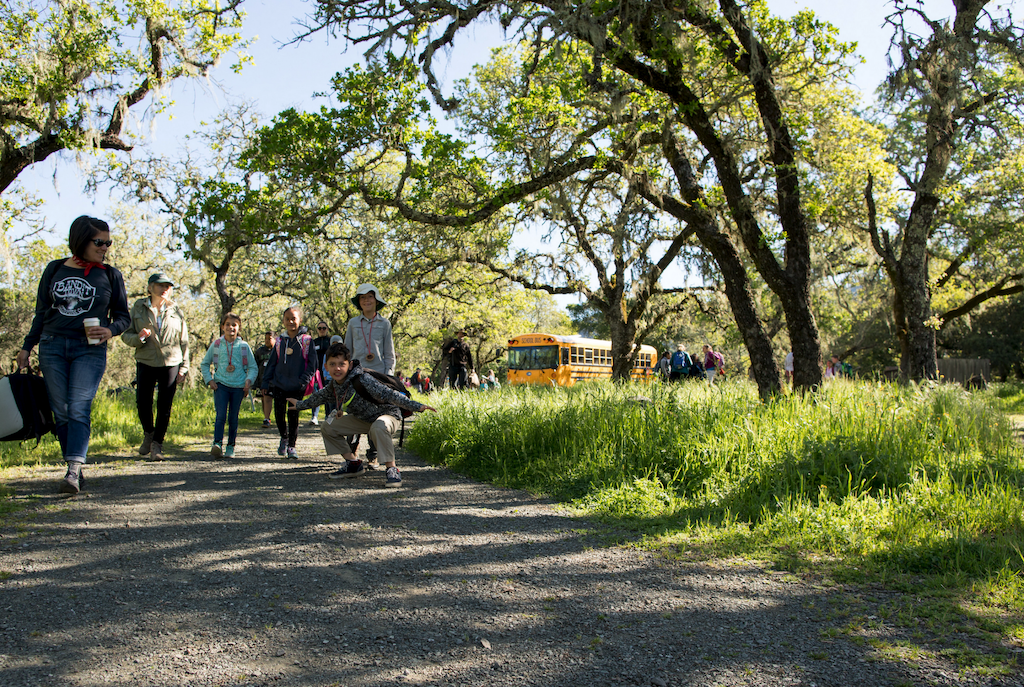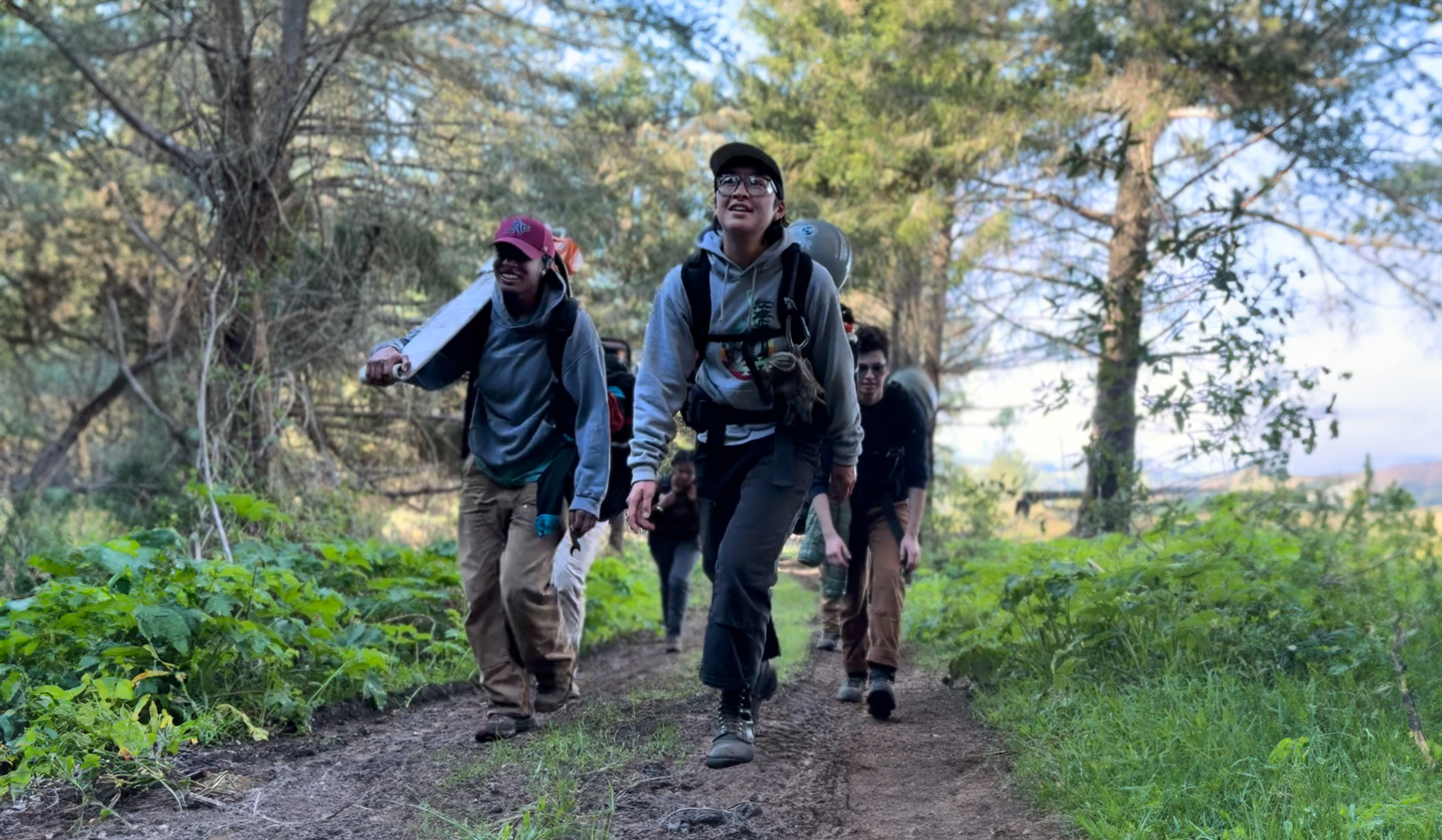This past weekend, ACR Mountain Lion Project lead Dr. Quinton Martins noticed GPS cluster points in the Glen Ellen – Sonoma area that indicated a potential feeding site for one of our research subjects, P1, a female adult lion who had a litter of three kittens in April. Excited to know how the kittens were doing, Quinton raced out to set up a camera to document mom and kittens on the kill. On arrival, he found an adult buck neatly cached in a thicket of manzanita, poison oak and blackberry bushes. Footage retrieved the following day revealed that two of the three kittens had survived to the 4-month mark. In this video, one of the kittens makes a tentative attempt to feed on the buck.
“At four months these kittens are mostly eating meat provided for by mom and are unlikely to be suckling anymore. Their teeth have developed enough to chew on soft meat,” Quinton explains. “As these youngsters traverse the landscape with their mother, their greatest risk in many wild populations who are not hunted by humans, is infanticide – being killed (and even eaten) by other males moving through the territory. That is why P5 (our collared adult male mountain lion) would play such an important role in securing or safeguarding an area.” Other risks include malnutrition and predation by other predators such as coyotes.
Although it is not that obvious here, the eye colour still has a bluish hue. In the next month or so their eye colour will change to the lovely amber-gray.

Survival rates for mountain lions are often around the 50% mark. We will continue monitoring their progress and hope to get a closer look in a month or two when P1’s GPS collar will have to be replaced due to low battery voltage.

It is fantastic to see P1 doing so well considering she is about 11 years of age which is old for a wild mountain lion.





